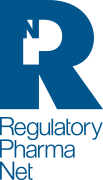The guideline ICH Q3D – GUIDELINE FOR ELEMENTAL IMPURITIES, which is now fully into force (effective for new marketing authorization applications from June 2016 and for authorized medicinal product from December 2017), was implemented to minimize the Elemental Impurities (EIs) toxicological effect and to create a global standard in drug manufacturing.
The EIs are 24 metal impurities which are potentially present into the final drug product. These elements could be introduced into the drug product by one or more of the following way:
- interaction with process equipment, container/closure systems, environment …;
- presence in components of the drug product (active substance, excipients, raw materials…);
- as residual catalysts intentionally added during the synthetic process.
The elemental impurities could affect the product quality and, therefore, have to be monitored and controlled during the entire manufacturing process.
The ICH Q3D guideline recommends to take a risk-based approach where the following sources of finished product contamination must be analyzed:
- manufacturing equipment;
- drug substance;
- excipients;
- container closure system;
- water (if applicable).
The risk assessment should be based on scientific knowledge and principles. It should link to safety considerations for patients with an understanding of the product and its manufacturing process (ICH Q8 and Q11).
One of the main preliminary activity of the risk-based control strategy consists in the evaluation of the approach to be used for the document drafting. The recommended approach is to evaluate the total amount of EIs into the drug product based on the daily dose. Using this strategy it is possible to determine the exact amount of impurity assumed daily.
The risk assessment process can be summarized in the following three steps:
- Identify known and potential sources of elemental impurities that may find their way into the drug product.
- Evaluate the presence of a particular elemental impurity in the drug product by determining the observed or predicted level of the impurity and comparing with the established PDE.
- Summarize and document the risk assessment. Identify if controls built into the process are sufficient or identify additional controls to be considered to limit elemental impurities in the drug product.
After having identified and calculated the amount of the impurities present in the drug product, the manufacturer should refer to the Permitted Daily Exposure (PDE). If the total elemental impurity level is more than 30% of the PDE, the manufacturer has to plan activities in order to guarantee that the amount of each elemental impurity will be less than the PDE.
For new marketing authorization applications:
- a summary of the Risk Assessment and information on any measures taken to establish the compliance should be included in the dossier submitted to the Authority, and the full report should be available on site for inspection.
For authorized medicinal product:
- the full report should be available on site for inspection.
Regulatory Pharma Net is at your disposal to offer companies additional information and support on quality and regulatory aspects to be compliant to the new guideline ICH Q3D – Guideline for elemental impurities. In particular, Regulatory Pharma Net could support companies during the preliminary evaluation activities needed to assess the available data, for the risk assessment writing and for the results evaluation.



